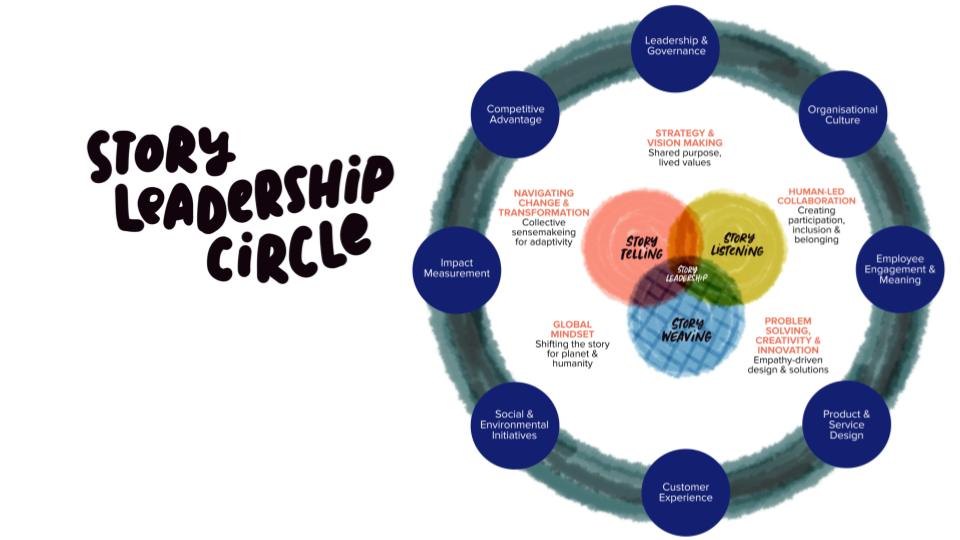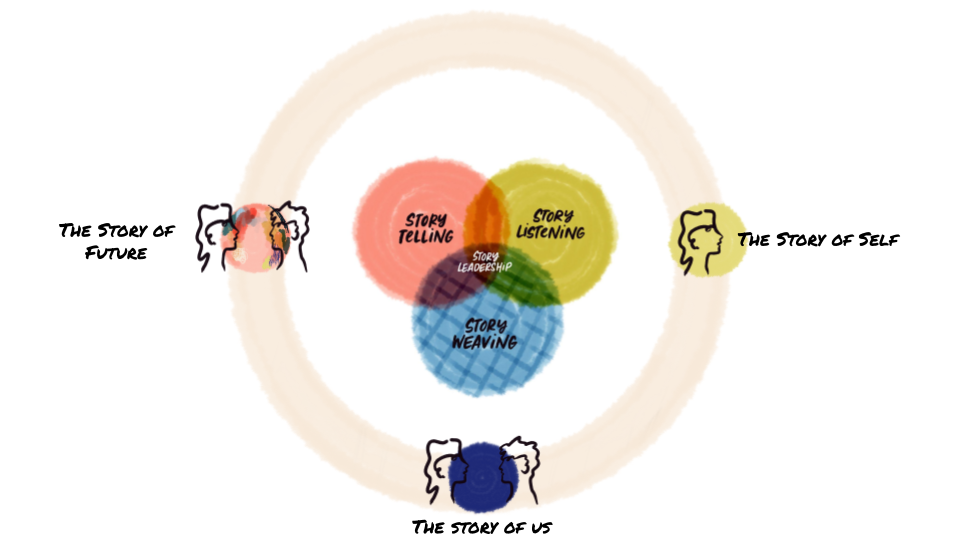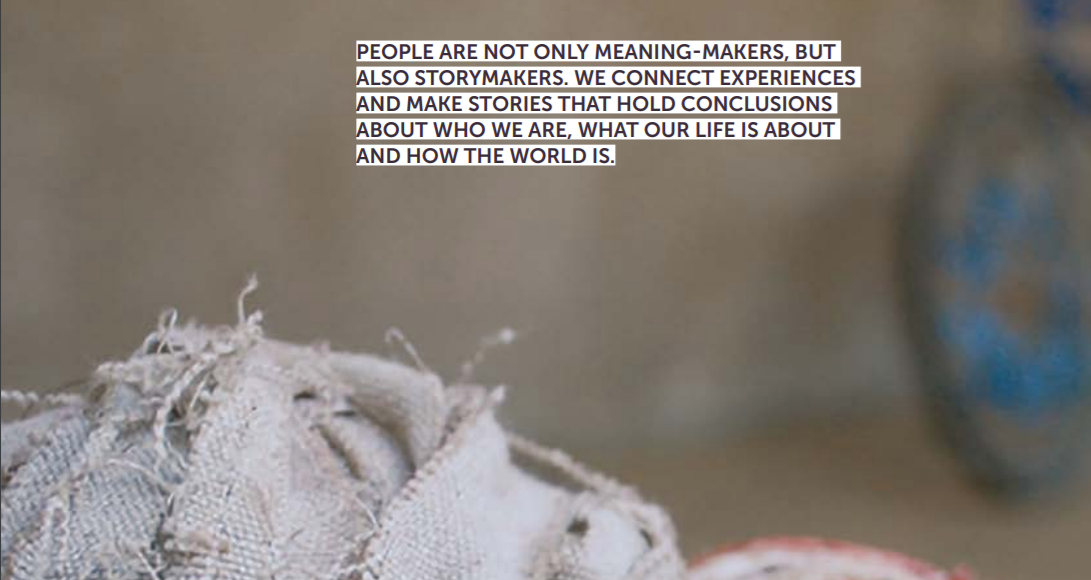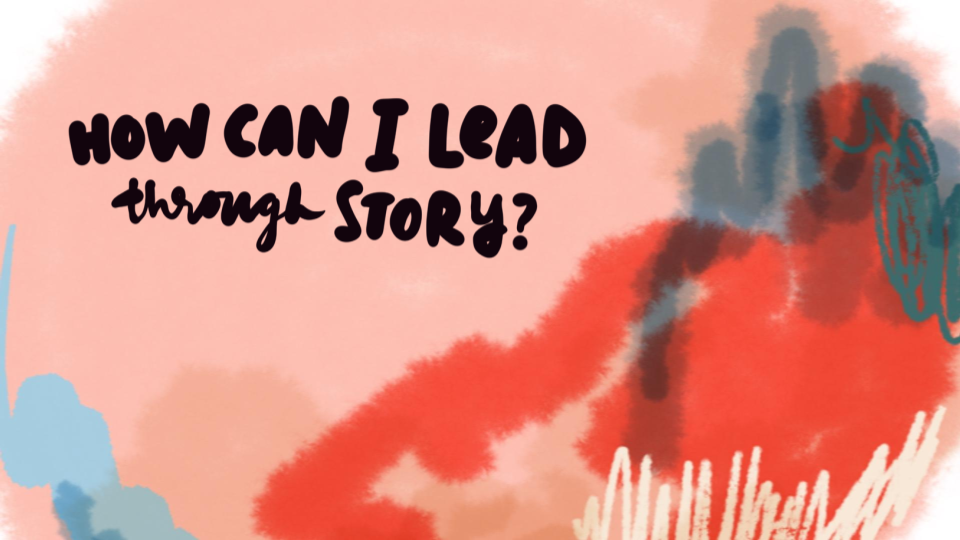What it means to lead through story – five organisations doing it well
Learn what it means to lead through story and how organisations are using it to navigate and create positive change.
Forget ‘The Great Resignation’, we are living in ‘The Great Navigation’
As we each do our best to navigate these VUCA times, we have witnessed a profound shift from defining ‘leadership’ as the ability to inspire, persuade and influence to understanding it as being more about listening, engaging, doing, and being of service than anything else.
Whether it’s the result of diabolical inaction on climate change or the devastation of the pandemic, or both, there has undoubtedly been a growing disillusionment and distrust of ‘leaders’ and people in positions of power and authority in recent times.
While the majority of political leaders seem to be failing to navigate the myriad challenges before us according to the latest figures from The Edelman Trust Barometer, many Australians are now looking to business as the only institution to be both “competent and ethical” in filling that vacuum.
Right now, we are craving empathy, proactivity, innovation, and trust. So, as society ‘bestows upon business a clear imperative for driving social change’, we have a big decision to make as business leaders and social entrepreneurs:
Sit on the sidelines and risk missing this critical moment to create the kind of widespread and inclusive change we know is necessary?
Or step up to the proverbial plate and meet this opportunity with empathy, creativity and a whole lot of chutzpah?
If you chose chutzpah – we’ve got good news for you: the key to your success resides in your ability to use story to create a narrative for the world as it is and as it could be. So, what does that mean?

Defining ‘Story Leadership’
We define Story Leadership as the art and science of wielding story in a powerful, responsible and generative way to create transformation, healing and wholing for individuals, communities and society. In short, it means the ability to solve problems, restore and renew communities and build culture using the power of story.
Why story? Because stories help us foster empathy and connection; uncover new learnings and insights; create a shared vision, purpose and ownership; and encourage greater democratisation and transparency. These qualities, empathy chief amongst them, are some of the most important leadership skills for the future of work and indeed the future of our world (Forbes, 2021).
While there has been no better way throughout history for leaders to bring communities together and lead people towards positive, hope-filled change than through story and compelling oratory, what these VUCA times are demanding from leaders goes far beyond the ability to tell a compelling story. It requires: ‘Story Leadership’.
The three elements of ‘Story Leadership’
Beyond ‘story telling’, a story leader is also adept at creating and holding space for story, and listening for the collective narrative that emerges. This is what we call ‘story listening,’ or the ability to create and hold space for diverse voices, complexity and multiple perspectives to arise.
Through this process of story listening, leaders can create the conditions for ‘the three Bs’:
- Bridging divides
- Building connections, and
- Bringing communities together
While it might seem somewhat intangible and ‘fluffy’, space holding in this way is highly effective, scalable, inclusive, and proven to work in creating systems change and widespread transformation (as you will soon see from five organisations doing it well).
The third and final pillar of ‘Story Leadership’ is the ability to synthesise the many stories that have emerged in the listening space and weave them together into a new and inclusive collective narrative where everyone feels represented. This highly sought-after ‘story weaving’ gives leaders the qualitative data, buy-in and cultural intelligence they need to solve complex problems, unlock creativity, rapidly sensemake, and build thriving cultures. It develops within them the core capacity to lead people through complexity.

Illustration: Devon Bunce, Digital Storytellers
Being able to skilfully employ the three elements of Story Leadership – telling, listening and weaving – separates the empathetic and inclusive leaders of the future from those of the past. And, like any skill, we can learn how to do it better, and lead our communities towards positive change through story.
What does story leadership look like in practice?
Story Leadership as a theory is good and well, but what does it actually look like in practice and what are some real world examples of organisations using it to great effect? Here are five organisations or communities that we see as story leaders and what we can learn from them about what it means to lead through story.
1. McKinsey & Co.
When George Floyd was murdered on May 25, 2020, raw and important conversations about race were happening everywhere—from news headlines to social media. However, Osato Dixon, a managing producer at global management consultants, McKinsey & Co., felt that “some of the most important voices within the Black community were not being heard.”
Compelled to contribute to the discourse in a meaningful way, as both a filmmaker and as a Black man living in America, Osato founded ‘Our Black Voices’, a video collection featuring perspectives from more than 50 Black colleagues at McKinsey across America.
“It was a personal opportunity to tap into—and amplify—the reservoir of knowledge, experience, insight, and awareness that is abundant in the Black community, which so often remains unheard.
“I suspect many people will be taken aback by what they hear in these interviews, whether it’s straightforward honesty or the fearless vulnerability. By better understanding the experiences of our colleagues, I’m hopeful perspectives, perceptions, and biases change so that you’re inspired to listen more deeply to the Black voices that surround you.” – Osato Dixon

Still: McKinsey Our Black Voices
Not only did this process of telling, listening and weaving stories together cement McKinsey’s commitment to inclusion and diversity in the firm’s history and daily practice, it helped to lead and accelerate change within the firm for racial equity and justice, and supported countless others to combat racism across the world in their homes and in their hearts.

2. Queensland Health
While it does not get much media attention, sepsis is a life-threatening condition caused by the body’s overwhelming response to infection. In 2021, Queensland Health needed to grow awareness of the condition, and capture the many stories of those impacted by paediatric sepsis in an effort to improve its diagnosis, care and outcomes.
To hold space for the reality and lived experience of this illness in a way that also elicited key themes and action areas for a new Five Year Strategic Roadmap, required a willingness to put human stories at the centre and an openness to the complexity that may emerge.
Through an engaging, story-led consultation process for a wide range of stakeholders, including families, GPs, clinicians, and other health professionals, Queensland Health was able to skillfully offer people the opportunity to share their experiences (storytelling), hear the experiences of others (story listening) and then weave together a vision for paediatric sepsis care (story weaving) into the future.

Using story leadership to improve pathways for the diagnosis and treatment of paediatric sepsis not only helped to create a sustainable future for paediatric sepsis care in Queensland but it will quite literally save lives. A compelling example of story leadership in action.

3. SAP
Having created meaningful and tangible impact across the world for the last 10 years through their Social Sabbatical, software and tech solutions giant SAP wanted to exponentiate their impact and reach and cement the future of the program.
Their process involved gathering stakeholders around a ‘virtual campfire’, sharing stories and insights from their experiences with the program (storytelling and story listening). From there, key stakeholders were brought together to harvest and draw out key themes, messages and discussion topics (story weaving) to be presented back to the group.
What emerged was not only a sharp distillation and clarification of their key narratives and ongoing impact, but a renewed excitement and enthusiasm for the program, thanks to an exciting visual illustration and video to promote further conversation and ideation beyond the confines of the workshop.

Doesn’t that sound like exactly what we all need now – renewed excitement and enthusiasm and a roadmap for increasing impact? Story leadership can unlock all of that and more.

4. Tourism Flanders
Tourism Flanders’ Holiday Participation Centre in Belgium is deeply passionate about holidays for all, and here’s why: holidays are important opportunities for us to reconnect with ourselves and our ideas, without the confines of our usual environments, responsibilities and stressors. However, holidays are often inaccessible for people from low socioeconomic backgrounds and that’s what Tourism Flanders was on a mission to change.
Poverty has a huge impact on people’s leisure time. Through their initiative ‘Everyone Deserves A Holiday’, Tourism Flanders wanted to bring together local operators and a variety of other stakeholders to increase access to holidays for everyone. Using the power of storytelling in a process called the Spielraum, roughly translated as ‘entrepreneurial elbowroom’ or ‘wiggle room’, they spearheaded a shift away from the economic vision on tourism, into a vision that reveals its contribution to wellbeing, sustainability and becoming fully alive.
“If we host a Spielraum where people are asked to reflect on moments while travelling, hosting or even contributing to travelling opportunities for others, we create a space for deeper thoughts and surprising insights.
“And there is more: if we document these stories, we add another layer of meaning to people’s experiences. As we pour our energy into this dedicated work of writing stories, we can share them in a larger context. Then, something can start to shift. Through the collecting and sharing of stories, the immeasurable is made visible.” – Toerism Vlaanderen
It is now 20 years later and the initiative has grown to more than 2,400 partners, consisting of 660 tourism entrepreneurs and 1,750 social organisations with more than 150,000 people in poverty being supported to take day trips or short holiday breaks in the region every year.


5. Regen Melbourne
It’s news to no one that we are grappling with a series of cascading global economic, social and environmental crises right now, which are dramatically exposing how fragile and inequitable many of our current systems truly are. However, with the help of an economist, a doughnut and some story leadership, the growing ‘Regen movement’ in Australia is trying to bravely reimagine our global systems and craft a more inclusive narrative for our cities.
Embarking on story-driven community engagement processes designed to build understanding, alignment, and data on what it means to ‘live inside the doughnut,’ Regen Melbourne designed story-led processes that included workshops, interviews and roundtables.
The idea was to make the concept of ‘doughnut economics’ more accessible and tangible (storytelling), and to create a space for participants to consider and share their portrait for a thriving city (story listening). What surfaced were dozens of vision statements that needed to be synthesised and shared into a new collective narrative (story weaving) under the banner ‘What Does a Thriving City Look Like?’.

Illustration: Regen Melbourne ‘A City That Is’ by Devon Bunce, Digital Storytellers
In many ways, our best hope of rising to the challenges before us is by taking a ‘systems approach’. To do this, we must be able to find ways of creating spaces to be heard, then seeing and piecing together seemingly disparate parts of the puzzle to create a wide view of the ‘system’, how it functions and what needs to change. This is the power of story leadership in a (do)nutshell.

Are you ready to start leading through story?
Right now we need businesses and entrepreneurs who are equipped to hold empathy-driven spaces that enable problem solving, creativity and innovation. As we now know, this is exactly what being a story leader is all about.
This ability to tell, listen and weave stories will become one of the most highly sought-after leadership skills as we navigate this next phase of the pandemic, the rest of the decade, and beyond. With many great organisations to look to, who are already using story leadership to strengthen empathy and engage in problem solving, we might just be able to reimagine and regenerate a new world that works better for all.
Are you ready to start leading through story? We want to help you build the skills you need. Get in touch about a Story Leadership Clinic for your organisation or movement and start making moves towards your vision for a bold and beautiful new world.

